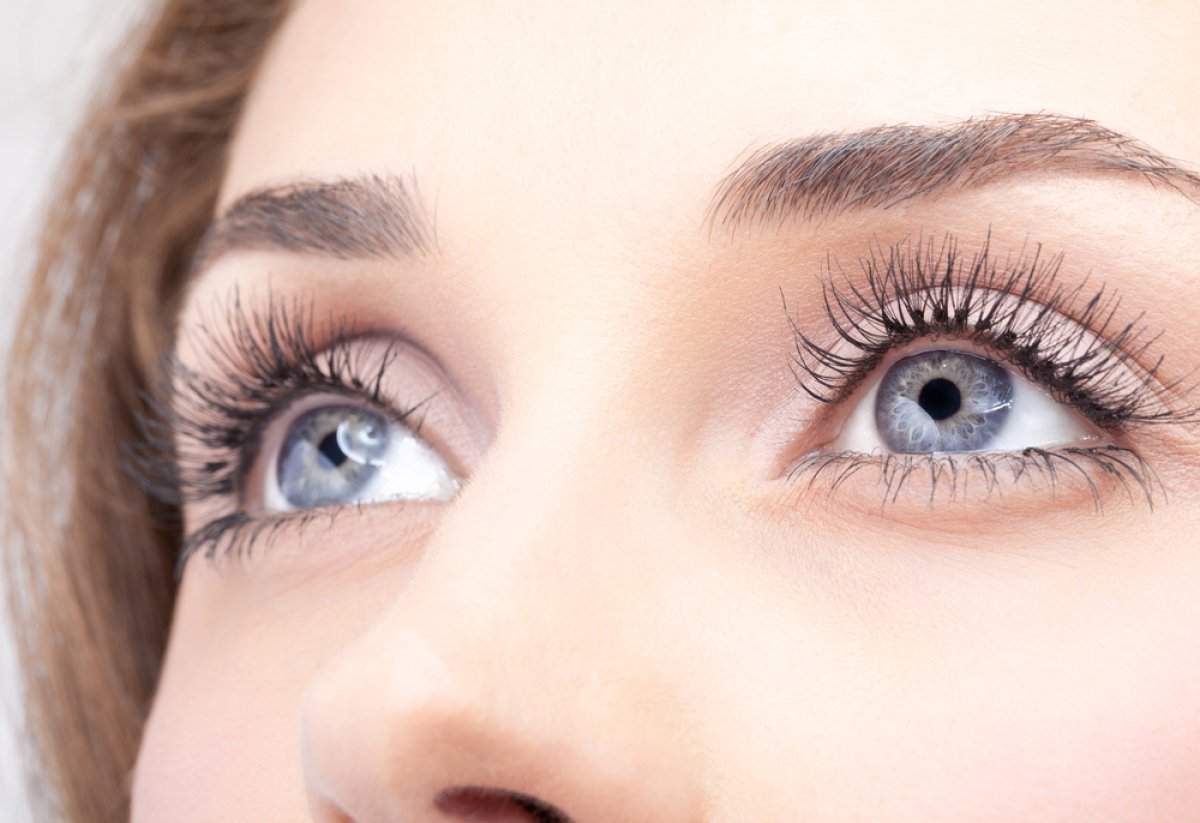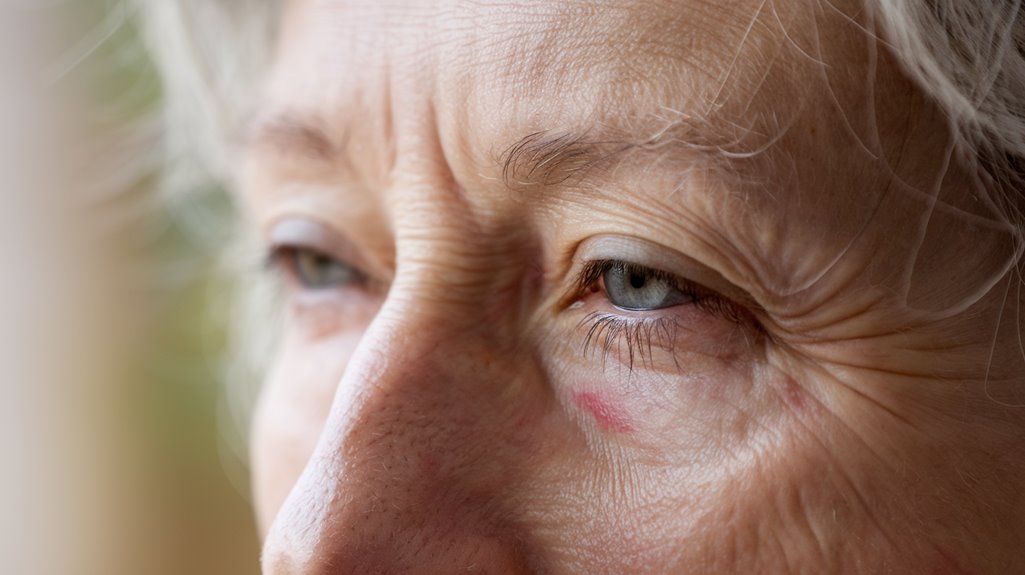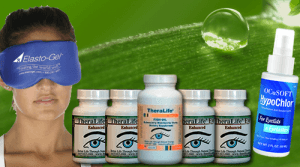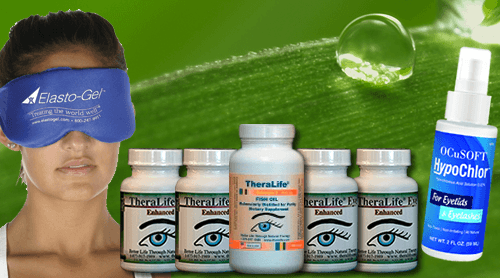During menopause, the hormonal changes, particularly the decline in estrogen, significantly impact eye health. This hormonal shift affects tear production and eyelid gland function, contributing to conditions like blepharitis, which manifests as irritation, itching, and crusting. Reduced estrogen levels can also exacerbate dry eye syndrome, increasing ocular discomfort and potentially affecting vision quality. Proper management of these symptoms involves regular eyelid hygiene and may require professional guidance.
Theralife provides effective solutions for managing eye health during menopause, offering a range of natural products specifically designed to alleviate symptoms of blepharitis and dry eyes. Their products focus on restoring natural tear production and improving eyelid gland function, promoting overall eye comfort and health. By using Theralife‘s comprehensive eye care solutions, customers can experience relief from eye discomfort and maintain their vision quality through this transitional phase. Explore further insights on how menopause affects ocular health and discover Theralife’s beneficial offerings.
Best Blepharitis Treatment From TheraLife
Key Takeaways
- Menopausal hormonal changes, particularly declining estrogen, can exacerbate blepharitis by affecting tear production and eyelid health.
- Hormonal imbalances during menopause influence tear composition, leading to conditions like dry eye syndrome and keratoconjunctivitis sicca.
- The risk of blepharitis increases in menopausal women due to changes in tear film stability and eyelid margin inflammation.
- Proper eyelid hygiene and warm compresses are essential for managing blepharitis symptoms during menopause.
- Persistent ocular symptoms in menopausal women warrant professional evaluation to prevent chronic eye issues and improve quality of life.
Understanding Blepharitis: Causes and Symptoms
Blepharitis is a common ocular condition characterized by inflammation of the eyelid margins, and understanding its causes and symptoms is essential for effective management.
You’ll find that Blepharitis triggers often include bacterial colonization, seborrheic dermatitis, and meibomian gland dysfunction. These factors contribute to a dysfunctional eyelid microenvironment, fostering inflammation.
Clinically, Blepharitis symptoms present as eyelid redness, crusting, and a gritty sensation. Patients may report itching, burning, or tearing, complicating daily activities.
Accurate diagnosis requires identifying these triggers through a thorough clinical examination, focusing on eyelid margin assessment. Chronic cases may involve Demodex mites, which affect approximately 30% of patients, leading to persistent symptoms.
It’s critical to recognize that chronic cases may lead to more severe ocular surface disease. Implementing targeted interventions, addressing specific triggers, and symptomatology can mitigate the condition’s impact on visual health and quality of life.
The Role of Hormones in Eye Health
When considering eye health during menopause, you should recognize the significant influence of hormonal fluctuations, particularly estrogen. Research indicates that hormonal imbalances can exacerbate conditions like blepharitis by affecting tear production and ocular surface stability. Furthermore, declining estrogen levels have been associated with changes in vision, underscoring the need for targeted clinical evaluation and management. It’s essential to understand that dry eye disease can be a significant concern during menopause due to changes in tear production and composition.
Hormonal Imbalance Effects
Although often overlooked, hormonal fluctuations during menopause can markedly impact ocular health, particularly in the development of blepharitis.
The decline in hormone levels, especially estrogen, affects the lacrimal and meibomian glands, leading to eye dryness—a significant contributor to blepharitis. Hormonal imbalance disrupts the production of tear film, which is essential for maintaining ocular surface integrity.
This disruption can exacerbate inflammation, causing discomfort and irritation. Clinical evidence shows that menopausal women are at a heightened risk for dry eye syndrome, often manifesting as blepharitis. Sjogren’s syndrome is another condition that can cause severe dry eyes, and it is often associated with autoimmune diseases that can overlap with menopausal symptoms.
Recognizing the link between hormonal changes and eye health is vital for effective management. Targeted interventions, such as artificial tears or omega-3 supplements, may alleviate symptoms by addressing underlying hormonal causes.
Regular ophthalmologic evaluations are advised.
Estrogen’s Impact on Vision
The interconnectedness of hormonal fluctuations and ocular health extends beyond dry eye syndrome, with estrogen playing an essential role in vision. Estrogen levels notably influence ocular surface stability, retinal health, and tear film composition. As estrogen levels decline during menopause, you might experience vision changes, impacting overall eye health.
- Ocular Surface Stability: Estrogen modulates the production of mucous and aqueous components in tears, affecting lubrication and comfort.
- Retinal Health: Estrogen receptors are present in retinal cells, influencing neuroprotection and vascular function, critical for maintaining visual acuity.
- Tear Film Composition: Alterations in estrogen levels can lead to imbalances in tear film, exacerbating dryness and irritation.
Understanding these changes helps in managing ocular symptoms effectively, emphasizing the necessity of tailored eye care strategies during hormonal changes. A common symptom arising from these hormonal changes is aqueous deficient dry eye, where insufficient tear production leads to dryness and discomfort.
How Menopause Affects Tear Production
Menopause considerably impacts tear production, primarily due to hormonal changes that occur during this life stage. Hormonal fluctuations can disrupt the tear film’s stability, leading to symptoms of dry eye. Estrogen and progesterone levels decline, which can alter the composition and production of tears. This hormonal shift affects the lacrimal glands, responsible for tear secretion, and can result in decreased tear volume and quality. Keratoconjunctivitis sicca is a common condition in menopausal women, characterized by chronic dry eye symptoms that require careful management to prevent corneal damage.
| Hormonal Change | Impact on Tear Film | Clinical Symptoms |
|---|---|---|
| Decline in Estrogen | Reduced Tear Stability | Dryness, Irritation |
| Decreased Progesterone | Altered Tear Composition | Blurred Vision |
| Hormonal Imbalance | Decreased Tear Production | Increased Sensitivity |
Understanding how menopause affects tear production is vital for addressing ocular health issues. Monitoring these changes and seeking appropriate treatments can enhance eye comfort and reduce the risk of further complications.
The Impact of Estrogen on Eye Glands
Estrogen plays an essential role in maintaining the health and functionality of eye glands, particularly the lacrimal and meibomian glands. These glands are important for producing tears and maintaining ocular surface stability. Estrogen receptors within these glands influence their activity and secretion levels. As estrogen levels fluctuate, especially during menopause, you may notice changes in eye gland performance.
- Lacrimal Glands: Estrogen impacts tear production by modulating lacrimal gland function, critical for eye hydration.
- Meibomian Glands: These glands secrete oils that prevent tear evaporation, and estrogen influences their secretion.
- Hormonal Imbalance: Shifts in estrogen can lead to dry eyes, affecting comfort and vision quality.
Omega-3 Fish Oil Benefits have been shown to support eye health by thickening natural tears and preventing evaporation, which may help manage symptoms of dry eyes during hormonal changes.
Understanding these hormonal effects on eye glands can help manage ocular health during menopause.
Identifying Blepharitis During Menopause
As hormonal changes occur during menopause, identifying blepharitis can become particularly important. Menopause triggers fluctuations in estrogen levels, impacting the meibomian glands and leading to dry, inflamed eyelids. You might notice blepharitis symptoms such as eyelid redness, irritation, and crusting along the lash line. These symptoms often coincide with menopausal changes, making timely identification vital. Clinically, examine for eyelid margin inflammation and assess tear film stability. Symptoms like burning sensations, photophobia, and frequent blinking may suggest blepharitis, exacerbated by hormonal shifts. Differentiating these from other ocular conditions entails a thorough slit-lamp examination. Recognizing the interplay between menopause and ocular health is essential for accurate diagnosis. Regular eyelid hygiene can help manage symptoms and reduce bacterial overgrowth associated with blepharitis. Early detection assists in mitigating discomfort and preventing complications related to untreated blepharitis.
Treatment Options for Managing Blepharitis
To effectively manage blepharitis, you’ll find that warm compresses can enhance blood circulation and aid in loosening crusts on the eyelids, which is supported by clinical evidence. Implementing regular lid hygiene practices, such as gentle cleansing with diluted baby shampoo or commercially available eyelid scrubs, reduces bacterial load and decreases inflammation. Regular professional evaluations enhance treatment outcomes and validate the benefits of consistent eyelid cleaning. These strategies are fundamental in alleviating symptoms and maintaining ocular health during menopause.
Best Blepharitis Treatment From TheraLife
Warm Compress Benefits
A warm compress is a widely recommended treatment option for managing blepharitis due to its effectiveness in reducing eyelid inflammation and improving glandular function.
Applying a warm compress directly to the eyelids can provide immediate eye relief by loosening crusts and debris while promoting oil secretion from the meibomian glands. Consistent use has shown significant benefits in maintaining eyelid hygiene and preventing symptoms’ recurrence.
- Enhanced Blood Circulation: Increases blood flow to the eyelids, aiding in nutrient delivery and toxin removal.
- Glandular Unblocking: Helps in liquefying thickened oil secretions, facilitating the unblocking of the meibomian glands.
- Symptom Alleviation: Reduces swelling and discomfort, providing substantial eye relief and improving overall ocular health.
Incorporating warm compresses into your routine can be a simple yet effective strategy for managing blepharitis. Consistent cleaning routines and the use of effective eyelid cleansers are vital for maintaining eyelid health.
Lid Hygiene Practices
Effective lid hygiene is essential for managing blepharitis and should be integrated into your daily routine. Consistent lid cleaning reduces debris, bacteria, and inflammation on the eyelid margin. Clinical evidence supports the use of eyelid scrubs to maintain ocular surface health. Use a non-irritating eyelid cleanser applied with a clean cotton pad or pre-moistened eyelid wipe. Gently scrub along the lash line to remove residues, which can exacerbate symptoms. Contaminated eye makeup can lead to blepharitis and conjunctivitis, with symptoms worsening with continued use.
Consider the following guidelines for best results:
| Step | Frequency | Products |
|---|---|---|
| Lid Cleaning | Twice daily | Non-irritating cleansers |
| Eyelid Scrubs | Once daily | Pre-moistened wipes |
| Warm Compress | Before cleaning | Warm, moist cloth |
| Follow-up Care | As needed | Artificial tears |
Adhering to these practices can alleviate blepharitis symptoms, improving your ocular comfort.
Lifestyle Tips for Maintaining Eye Health
Maintaining ideal eye health during menopause involves integrating specific lifestyle strategies that target common ocular issues.
Adopting an eye-friendly diet rich in omega-3 fatty acids, vitamins A, C, and E, and antioxidants can support tear production and reduce inflammation. Adequate hydration strategies are equally essential, as systemic dehydration exacerbates dry eye symptoms.
Implement these evidence-based tips to enhance ocular health:
- Eye-Friendly Diet: Incorporate leafy greens, carrots, and fish to maximize nutrient intake vital for eye health.
- Hydration Strategies: Aim for at least eight glasses of water daily to maintain ideal tear film stability.
- Environmental Control: Utilize humidifiers and minimize exposure to air conditioning to preserve ocular surface moisture.
These strategies are foundational in managing eye health proactively during menopause.
When to Seek Professional Help
While lifestyle modifications play a significant role in managing ocular health during menopause, recognizing when to seek professional help remains essential.
It’s imperative to identify warning signs such as persistent redness, swelling, or vision changes. These symptoms may indicate underlying complications requiring a thorough evaluation.
Additionally, if over-the-counter remedies and home care strategies fail to alleviate discomfort, consult an ophthalmologist. They can provide evidence-based treatment options tailored to your specific condition, potentially including prescription medications or specialized therapies.
Early intervention helps prevent chronic eye issues and improves overall quality of life.
Remember, timely professional assistance is essential in addressing blepharitis effectively, ensuring ocular health, and mitigating menopausal influences on your eyes.
Prioritize your vision by seeking expert care when necessary.
Best Blepharitis Treatment From TheraLife
Frequently Asked Questions
Can Diet Influence the Severity of Blepharitis During Menopause?
Yes, your diet can influence blepharitis severity during menopause.
Consuming anti-inflammatory foods, such as omega-3 rich fish and leafy greens, may help reduce inflammation associated with blepharitis. Staying hydrated is essential, as proper hydration supports tear production and maintains ocular surface health.
Clinical evidence suggests that integrating these dietary elements can mitigate symptoms and improve eye health, providing a non-pharmacological approach to managing blepharitis effectively.
Are There Natural Remedies to Alleviate Blepharitis Symptoms?
Yes, you can use natural remedies to alleviate blepharitis symptoms.
Evidence suggests that warm compresses effectively loosen eyelid debris and improve gland function. Additionally, herbal infusions like chamomile or green tea may provide anti-inflammatory benefits.
Apply a warm compress for 5-10 minutes daily, ensuring it’s not too hot. Brewing herbal infusions and using them as a gentle eyelid wash can also offer symptomatic relief, promoting overall ocular health.
How Does Stress Contribute to Blepharitis in Menopausal Women?
Stress can exacerbate blepharitis in menopausal women by intensifying hormonal fluctuations.
When you’re stressed, your body’s stress hormones can disrupt normal hormone balance, potentially worsening inflammation.
Effective stress management is essential, as it may stabilize these fluctuations, reducing blepharitis symptoms.
Research shows that relaxation techniques like mindfulness and regular exercise can mitigate stress impacts, helping maintain ocular health.
Managing stress not only supports eye health but also overall well-being.
Can Eye Exercises Help Reduce Blepharitis Symptoms?
Eye movement exercises, eyelid hygiene, and consistent practice can considerably reduce blepharitis symptoms.
Eye movement enhances tear distribution, promotes gland function, and improves circulation. Eyelid hygiene, including warm compresses and lid scrubs, plays a critical role in managing inflammation and bacterial presence.
While exercises alone can’t cure blepharitis, integrating these into your daily routine supports overall eye health, offering relief and preventing symptom exacerbation.
Evidence suggests that combined approaches yield better outcomes.
What Role Does Sleep Play in Managing Blepharitis?
Sleep plays an essential role in managing blepharitis symptoms. Prioritizing sleep hygiene and quality can considerably reduce inflammation.
Make certain you maintain a consistent sleep schedule and create an environment conducive to rest. Quality sleep helps regulate your body’s natural healing processes, alleviating symptoms like irritation and redness.
Evidence suggests that poor sleep exacerbates blepharitis, so don’t underestimate the power of a good night’s sleep in your treatment strategy.
Best Blepharitis Treatment From TheraLife
Conclusion
Navigating menopause can be challenging, especially when it affects your eye health. Hormonal changes, such as decreased estrogen levels, can lead to blepharitis by impacting tear production and gland function. TheraLife’s products are designed to support eye health during this transition, offering solutions that target these specific challenges. For instance, their natural supplements and therapies promote effective management of blepharitis by enhancing tear production and reducing gland inflammation.
TheraLife’s comprehensive approach also includes educating customers on lifestyle modifications and evidence-based treatments to alleviate discomfort. By using TheraLife products, you can maintain optimal eye health and comfort throughout menopause’s changing phase. Their resources guide you in recognizing symptoms early and provide a pathway to proactive care, ensuring you remain in control of your eye health. Whether it’s through specialized eye drops or dietary recommendations, TheraLife offers a tailored approach to meet the unique needs of menopausal women, helping them achieve long-lasting relief and improved quality of life.





